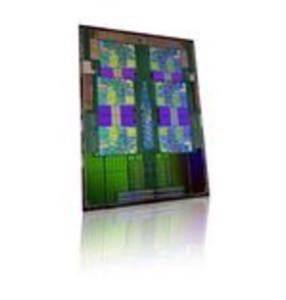We do not hear much about Advanced Micro Devices (AMD) when covering the cloud computing space. This struck me after reading the news yesterday about the dismissal of AMD CEO Dirk Meyers.

It took a bit of digging but we see a few salient landmarks that point to AMD’s viewpoint about the cloud as it begins the new year.
The most significant news from AMD in the past year related to cloud computing came last June when it introduced its Opteron 4000 and 6000 chips.
The architectures were designed from the inception for cloud computing. They are designed for mass distribution of data across thousands of servers. The Opteron chips are designed for low power in order to decrease electrical costs in data centers.
When they launched Opteron, AMD produced a short video that well illustrates the data challenge we all face and in turn the need for heavy duty architectures.
AMD will launch Bulldozer this year. Its micro-architecture has 16 cores. It’s designed for heavy application lifting in the data center and is perceived as a challenge to Intel’s high-end offerings.
The video gives an overview. It also goes into some detail about Bobcat, AMD’s x86 chip, to be launched early this year in personal computers. According to ComputerWorld, the chips are code-named Ontario and designed for CPUs based on AMD’s new Bobcat low-power architecture. It is used in netbooks and ultraportable laptops.
Ontario is part of larger family that AMD calls Fusion, which combines a CPU and a Graphical Processing Unit (GPU) on one chip.
There have been more advancements in the use of GPUs in data centers – especially with Amazon Web Services, which last year began offering a GPU instance. But the core capabilities of Bobcat appear to be better used in portable devices than in data centers.
The HPC blog reviewed how the Bobcat is perceived by AMD. The post raised questions about AMD’s overall cloud computing strategy and what role it plans to play:
As Anton Shilov at xBit Laboratories noted,” while Bobcat does not have visible advantages compared to already available Opteron CPUs, AMD will continue to evaluate the micro architecture as a potential solution for cloud datacenters that demand the maximum number of cores.”
Shilov went on to note that it is clear that Bobcat processors “will provide lower idle power compared to AMD Opteron chips based on K10.5 or Bulldozer micro-architectures. But the big question is whether Bobcat chips will actually be able to work fast enough to provide decent performance. If those chips do not provide enough speed, then AMD’s clients will have to install more of them, which will mean that any 2W-3W per core savings may never be evident due to a high number of chips.”
AMD’s John Fruehe gave some insight in a blog post last November about Bobcat for the cloud. He was tight-lipped, making the point that Opteron is a good choice for cloud computing. Bobcat may be further developed and offered when the time is right, Fruehe said.
There is not 100% clarity at this time about the needs of the cloud market because so much of it is evolving today, but we are serious about ensuring we have the right solution going into the future. That means any products we develop in the future for cloud servers would have “server class” features (ECC, appropriate cache sizes and memory support etc.)
So what does this mean for the roadmap? We’ll be a little more tight-lipped about that as there is little benefit in sharing that strategy with our competitors. However, while “Bobcat” might not be the right product today, we’ll continue to keep our eye on it. Should things evolve in that space, we’ll be ready.
For our part, we see the push for more mobile devices and the connection to the cloud. We expect AMD will consider its strategies beyond Bobcat and take into deeper consideration the requirements for continuous service from devices and sensors that will eventually fill our landscape and our lives.
That will be the challenge for AMD’s next CEO, who will undoubtedly have a keen focus on the cloud as the company maps out its ongoing roll-outs.










